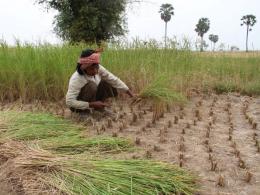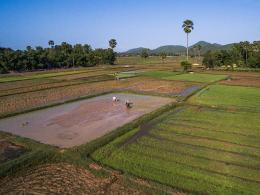Vulnerability & Impact Research Targeting Usability and Effectiveness (VIRTUE)
Background
Cambodia has been identified as one of the countries in South-East Asia most vulnerable to the health impacts of climate change (Yusuf & Francisco 2010). Priority risks in Cambodia include vector-borne diseases, water-related diseases, and the health effects of extreme weather events.
The development of a vulnerability index and adaptation assessment tool will facilitate effective and targeted health adaptation from policy to community level. Health-specific methods are not yet available, and thus are urgently needed, to facilitate assessment of community and population vulnerability to the health effects of climate change, and of the implementation and impact of adaptation activities at the community level. Such tools are essential to guide appropriate climate change adaptation in the context of financial, technical and human resource limitations, as is the case in Cambodia.
Overall Objective
Effective health adaptation responses targeted at vulnerable groups, based on improved understanding of climate-sensitive risks to health in Cambodia.
Expected Results
Index of vulnerability to the health effects of climate change and health adaptation assessment tool, inform MOH climate change adaptation response.
Location
Pilot sites selected from communities in receipt of CCCA-2 project interventions/activities
Approach
Indicators for the health vulnerability index may relate to the natural environment (weather and climate, geography, hydrology, ecosystem health), the anthropogenic environment (land use, agriculture, urbanisation, environmental degradation, food and water availability), human aspects (demography, population growth, socioeconomic factors), animal factors (livestock, disease vectors), health (population health status, climate-sensitive disease epidemiology, service availability), and those relevant to policy and governance. These indicators and associated data will be used to generate an index of vulnerability to the health effects of climate change in Cambodia. The index will be designed using eco-epidemiological techniques (such as Bayesian networks) in attempt to define causal pathways and provide a more realistic analysis of vulnerability than existing methods. The index may be useful to guide where activities under climate change and health projects are conducted, and identify what factors contributing to health effects are the highest priority; for example, education, water, sanitation and hygiene, or the provision of primary health care services.
Achievements to date
- Literature review, review of previous and current projects
- Compilation of relevant datasets
- Analysis of identified climate-sensitive risks
- Design of vulnerability index and incorporation of relevant data
- Trial and validation of index in pilot sites
- Development of assessment tool
- Trial and validation of tool in pilot sites






